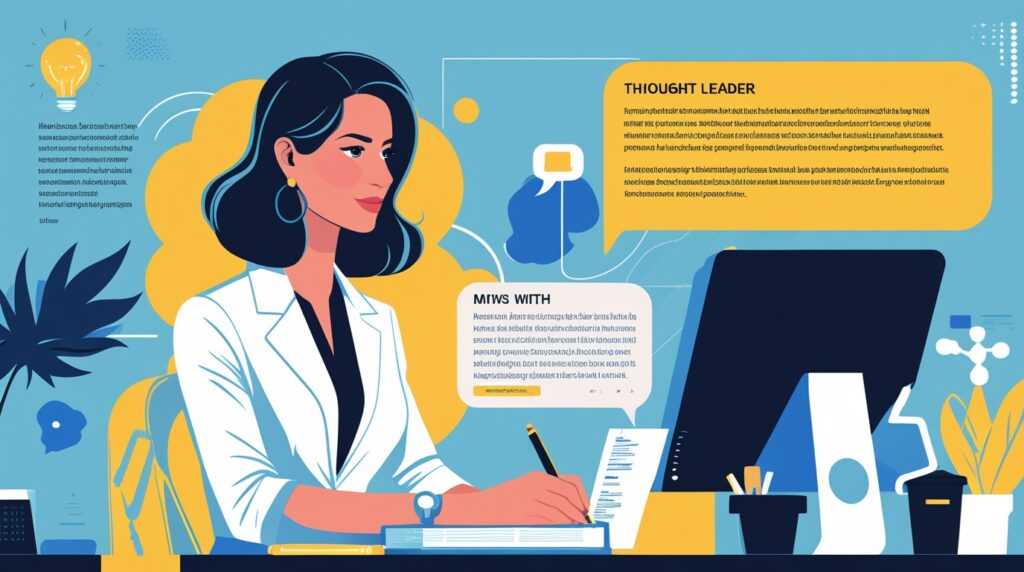Your cart is currently empty!
Introduction: The Mirror We Didn’t Expect

As artificial intelligence evolves from a tool into a collaborative partner, the most surprising insight isn’t about what it can do—it’s how much AI thinks like us. For thought leaders, strategists, and creators, understanding how AI models process language, predict patterns, and simulate reasoning is more than tech curiosity. It’s professional foresight.
AI is beginning to mirror our cognitive frameworks, narrative tendencies, and even emotional tone. This shared terrain means the future of influence, innovation, and leadership will depend on our ability to collaborate not only with AI, but like AI.
1. How AI Thinks: Patterns, Probabilities, and Prompt Engineering
At its core, generative AI like GPT-4 or Claude doesn’t think in binary code. It predicts the most likely next word or concept in a sequence based on vast training data. It doesn’t “understand” the world like a human, but it does excel at:
- Pattern recognition across text, logic, and even emotional tone
- Concept synthesis by layering context over time (like our long-term memory)
- Narrative structuring that reflects our storytelling instincts
This mirrors how thought leaders build arguments, distill complex trends, and connect interdisciplinary dots.
“The architecture of modern AI is essentially a statistical mirror of our most human communication patterns.” — Dr. Ethan Mollick, Wharton AI Researcher[[1]]
Takeaway: Learn prompt engineering not just to get better AI outputs, but to refine your own messaging clarity.

2. AI Communicates Like a Supercharged Editor
AI doesn’t invent from scratch; it recombines the best of what it’s been fed. In doing so, it often exhibits:
- Clarity through simplification
- Relevance through contextual prioritization
- Emotional resonance by mirroring common affective cues
This is eerily similar to how expert communicators and thought leaders operate. AI’s ability to write, ideate, and persuade stems from mastering the best of our own rhetorical techniques.
“AI, in many ways, functions like a cognitive assistant. But that assistant is drawing from the collective genius—and bias—of humanity.” — Kate Darling, MIT Media Lab[[2]]
Takeaway: AI will surface not only what you say, but how you say it. Refine your tone, rhythm, and emotional arc to improve your synergy with AI tools.
3. The Human-AI Similarity: Narrative Logic & Story Framing
Most LLMs (Large Language Models) are particularly adept at storytelling because stories are how humans organize meaning. Thought leaders often use:
- Metaphors to simplify abstract ideas
- Chronology to create momentum
- Archetypes to resonate with identity
AI does the same. In fact, AI excels when we give it narrative structure. Prompt it with a beginning, middle, and end—or the classic “problem-solution-impact” framework—and it shines.
Takeaway: Thought leaders who think in frameworks and narratives will feel more natural collaborating with AI. This isn’t a loss of originality; it’s amplification of structure.

4. Why This Matters: Co-Creation, Not Competition
As AI becomes more accessible, there is fear among experts and creatives that their voice may become obsolete. But the opposite is true: the more human your strategic thinking, ethical stance, and story sense becomes, the more valuable you are as a leader of ideas.
“AI can mimic voice. But it cannot yet mimic values.” — Rana el Kaliouby, AI ethicist and author[[3]]
What AI lacks is intention, conscience, and context beyond the text. Thought leaders provide:
- Moral perspective on what should be done
- Visionary foresight on what could be
- Cultural fluency on how people will respond
Takeaway: Don’t fight AI’s fluency. Instead, use your humanity to set the compass while AI supplies the engine.
5. Working Together: Thought Leadership in the Age of Machine Partners
To thrive in this new hybrid world, thought leaders can:
- Develop AI fluency: Learn how different models “think” so you can guide them effectively
- Create content prototypes: Use AI to rapidly draft, brainstorm, or simulate different communication styles
- Educate your audience: Share your behind-the-scenes process of working with AI to demystify and empower
- Establish boundaries: Define where your human insight begins and where AI ends—then communicate that clearly
Takeaway: AI is not your rival. It is your co-writer, your research assistant, and sometimes, your foil.
Thought Leadership as Symbiosis
AI thinks statistically. You think morally. It writes efficiently. You write intentionally. When combined, this creates a new paradigm of leadership: thoughtful, agile, and deeply resonant.
Understanding how AI thinks is not just a technical skill—it’s a form of digital empathy. And it’s essential for leaders who aim to shape the future, not just keep up with it.
The question isn’t whether AI can think like you. It’s whether you can lead like someone who understands AI.
Copyright 2025 Brigetta Margarietta TM and Thought Leadership Architect TM
Footnotes:
- Mollick, Ethan. “Using AI in the Classroom.” Wharton School, 2023.
- Darling, Kate. “The New Breed: What Our History with Animals Reveals about Our Future with Robots.” Macmillan, 2021.
- el Kaliouby, Rana. Girl Decoded: A Scientist’s Quest to Reclaim Our Humanity by Bringing Emotional Intelligence to Technology, 2020.
Bibliography:
Mollick, Ethan. “Using AI in the Classroom.” Wharton Interactive, 2023.
Darling, Kate. The New Breed. Macmillan, 2021.
el Kaliouby, Rana. Girl Decoded. Currency, 2020.
Bubeck, Sébastien et al. “Sparks of Artificial General Intelligence: Early experiments with GPT-4.” Microsoft Research, 2023.
OpenAI. “GPT-4 Technical Report.” 2023.
Jakesch, M., et al. “Value Alignment Problems in Generative AI.” Cornell Tech, 2022.
#ThoughtLeadership #AICommunication #AIandHumans #DigitalEmpathy #LeadershipInAI #HumanAIcollaboration #PromptEngineering #NarrativeThinking #EthicalAI #AIFutureReady



Leave a Reply